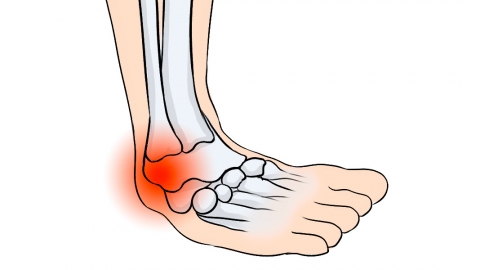What are the causes of foot pain in a 12-year-old boy?
Generally, foot pain in a 12-year-old boy may be caused by overexertion, ill-fitting shoes, growing pains, plantar fasciitis, paronychia, or other reasons. It is recommended to seek medical attention promptly, identify the underlying cause, and receive symptomatic treatment under a doctor's guidance. Specific analyses are as follows:

1. Overexertion: Twelve-year-old boys are typically active and energetic. Excessive physical activity, running, or jumping recently can lead to repeated strain on the foot muscles, causing soreness and discomfort. Reduce physical activity, avoid strenuous exercise, soak feet in warm water for 15–20 minutes daily, and gently massage the foot muscles to relieve muscle tension.
2. Ill-fitting shoes: Shoes that are too tight, too small, or have overly rigid soles can compress the bones and soft tissues of the foot, leading to localized pain. Promptly replace them with properly sized shoes that have soft, well-cushioned soles and good arch support. Avoid wearing ill-fitting shoes for extended periods to reduce pressure on the feet.
3. Growing pains: At age 12, children are in a rapid growth phase. Asynchronous growth rates between bones and muscles may cause temporary pain in the legs or feet, often occurring at night. Applying local heat therapy and gentle massage during episodes can help alleviate discomfort. Ensure adequate intake of calcium and vitamin D through a balanced diet rich in milk, eggs, and soy products.
4. Plantar fasciitis: This condition is often caused by repetitive microtrauma to the plantar fascia and manifests as pain in the sole of the foot, particularly noticeable upon waking or after prolonged standing. Patients may take medications such as celecoxib capsules, ibuprofen sustained-release capsules, or diclofenac sodium sustained-release tablets as directed by a physician to relieve pain.
5. Paronychia: Often caused by trimming nails too short, ingrown toenails, or bacterial infection following injury, this condition presents as redness and swelling and pain around the nail fold, which may progress to pus formation in severe cases. Topical treatments such as mupirocin ointment, fusidic acid cream, or compound polymyxin B ointment can be applied as prescribed to promote resolution of inflammation.
In daily life, pay close attention to the boy’s foot health. Perform proper warm-up exercises before physical activity and stretch afterward. Choose appropriate footwear and socks to prevent excessive stress on the feet. If foot pain persists or is accompanied by symptoms such as redness, swelling, or fever, seek timely follow-up care to adjust the treatment plan.




